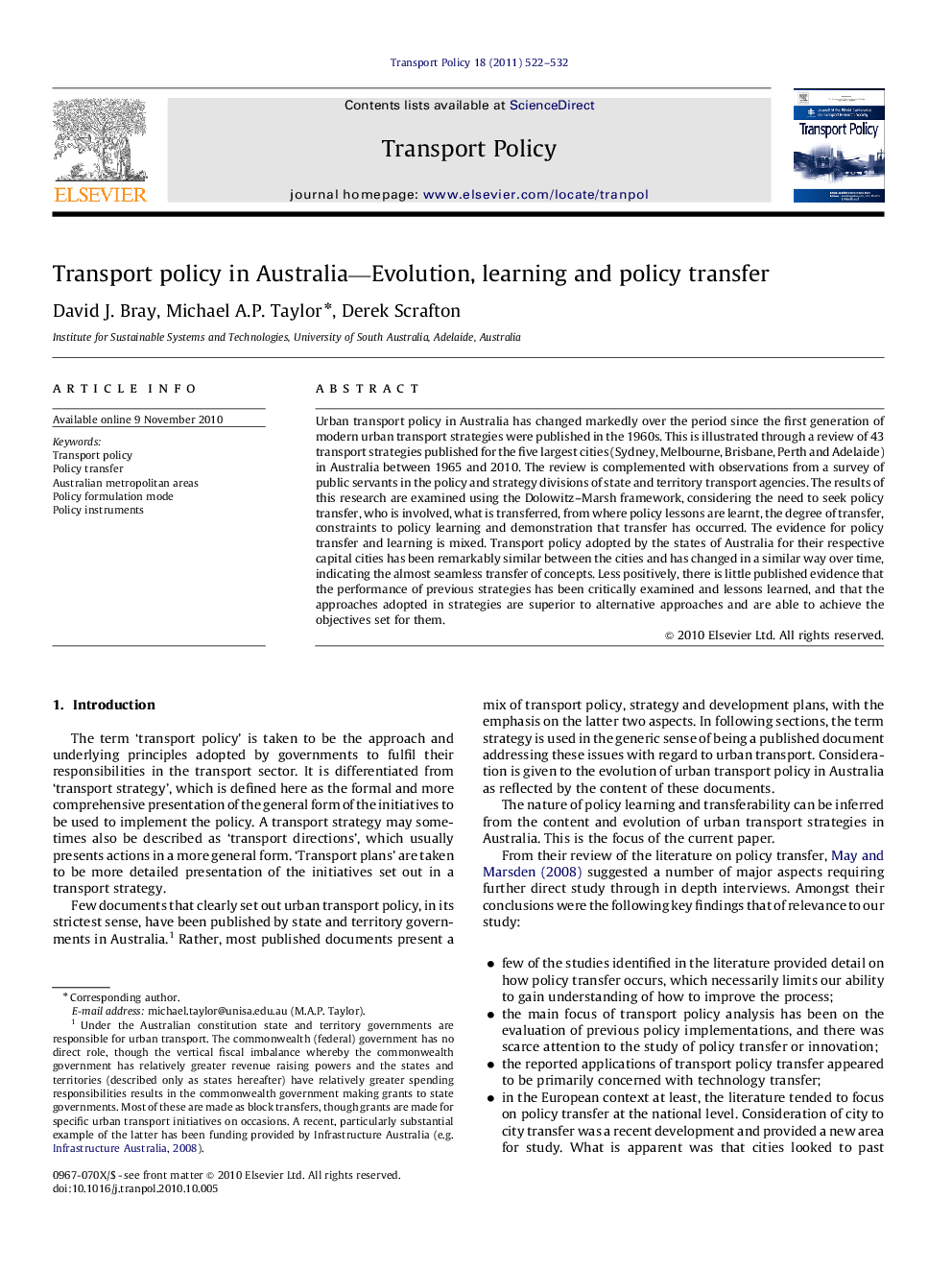| Article ID | Journal | Published Year | Pages | File Type |
|---|---|---|---|---|
| 1065394 | Transport Policy | 2011 | 11 Pages |
Urban transport policy in Australia has changed markedly over the period since the first generation of modern urban transport strategies were published in the 1960s. This is illustrated through a review of 43 transport strategies published for the five largest cities (Sydney, Melbourne, Brisbane, Perth and Adelaide) in Australia between 1965 and 2010. The review is complemented with observations from a survey of public servants in the policy and strategy divisions of state and territory transport agencies. The results of this research are examined using the Dolowitz–Marsh framework, considering the need to seek policy transfer, who is involved, what is transferred, from where policy lessons are learnt, the degree of transfer, constraints to policy learning and demonstration that transfer has occurred. The evidence for policy transfer and learning is mixed. Transport policy adopted by the states of Australia for their respective capital cities has been remarkably similar between the cities and has changed in a similar way over time, indicating the almost seamless transfer of concepts. Less positively, there is little published evidence that the performance of previous strategies has been critically examined and lessons learned, and that the approaches adopted in strategies are superior to alternative approaches and are able to achieve the objectives set for them.
Research Highlights►Evolution of Australian transport policy through five distinct phases. ►Three distinct modes of policy formulation identified: master planning, policy incrementalism, and aspirational planning. ►Shift from professional inquiry to a more normative form focusing on desired outcomes. ►two long term policy directions identified: support for public transport and use of traffic congestion as a policy instrument.
